Album of Summer Lotuses and Scholar Trees (夏荷八景·夏槐八景圖冊)
—A Qing Dynasty Masterpiece of Courtly Elegance (1808)
Overview
This dual album set, housed in Taipei’s National Palace Museum, comprises two exquisitely painted volumes: Eight Scenes of Summer Lotuses and Eight Scenes of Summer Scholar Trees. Created in 1808 by Dai Quheng (戴衢亨, 1755–1811)—a scholar-official and Qianlong-era imperial examination champion—the albums blend literati refinement with court aesthetics. Each of the 16 scenes pairs Dai’s delicate ink-and-color landscapes with Emperor Jiaqing’s calligraphic poems in regular script (楷書), forming a dialogue between brush and word that epitomizes Qing artistic ideals.
Full Translation & Cultural Context
Volume 1: Eight Scenes of Summer Lotuses (夏荷八景)
- 荷芳閏節 (Lotus Fragrance in Intercalary Summer)
- Translation: “As intercalary summer stretches endlessly, pavilions overlook fragrant waters. A scholar leans on railings facing noble lotuses—their purity dissolves worldly cares.”
- Cultural Note: The “intercalary month” refers to the traditional lunar calendar’s leap month adjustment. Lotuses symbolize untainted virtue in Confucianism.
- 荷瑞重臺 (Double-Blossomed Auspicious Lotus)
- Translation: “Crimson blooms layer upon jade plates—auspicious clouds glow like brocade. These thousand-petaled treasures from Aohan banner grace imperial gardens.”
- Historical Context: Aohan (敖漢) refers to a Mongolian banner that cultivated rare lotus hybrids as tribute.
- 荷軒快雨 (Joyous Rain at Lotus Pavilion)
- Translation: “Mist shrouds forests, rain drums on lotus leaves. Emerald canopies catch ten thousand pearls—cool pavilions steeped in distant fragrance.”
- Artistry: Dai’s “pearl droplets” technique uses layered ink washes to mimic rain.
- 荷閣薰風 (Fragrant Breeze at Lotus Tower)
- Translation: “Woods veil towers across clear streams; summer winds turn autumn-cool. Distant lotuses stretch toward heavens—still courtyards float with elegance.”
- 荷杯泛綠 (Green Lotus Chalice)
- Translation: “Emerald marshes sway in noon winds; open windows frame kindred souls. Raising cups, we taste pure essence—subtle perfusions through bamboo pipes.”
- 荷舫搖紅 (Red Sails Among Lotuses)
- Translation: “Flowers cage wave-shadows, smoke veils jade. Scarlet boats rock white lotuses—lost between water and clouds.”
- 荷池魚戲 (Fish Play in Lotus Pond)
- Translation: “Leaves thick, blossoms dense—fish dart through algae. Carefree as Zhuangzi’s pond—east, west, all directions welcome.”
- Philosophy: References Zhuangzi’s Daoist parable about fish’s joy.
- 荷沼禽嬉 (Waterfowl Frolic in Lotus Marsh)
- Translation: “Vermilion calyxes gleam in blue streams—herons and ducks dive. Flight and root both pulse with life—paintings transcend mortal journeys.”
Volume 2: Eight Scenes of Summer Scholar Trees (夏槐八景)
- 槐市橫經 (Scholars Debate Under Trees)
- Translation: “Long days under dense canopies—students chant Confucian classics. Deep learning roots spread—green shades cloak the Third Hall.”
- Institution: The “Third Hall” (第三廳) housed imperial examination archives.
- 槐黃試舉 (Golden Blossoms Herald Exams)
- Translation: “Amber blooms mark exam season—scholars chase lunar laurels. Ancient wisdom fuels statecraft—one branch plucked from Cassia Palace.”
- Symbolism: Cassia (桂) symbolizes imperial examinations; “plucking a branch” means earning the jinshi degree.
- 槐街珂集 (Jade-Adorned Officials Gather)
- Translation: “Blessed trees sweeten summer air—retired ministers clink jade pendants. Heaven’s avenue shuns heat—noon shadows guard Golden River Bridge.”
- 槐路蟬唫 (Cicadas Chant on Scholar’s Path)
- Translation: “Willow and scholar tree shadows merge—cicadas answer mountain springs. Serenity beneath leaves—three geng cycles cleanse worldly dust.”
- Calendar: The “three geng” (三庚) marks summer’s hottest phase in traditional almanacs.
- 槐舞虯龍 (Dragon-Dancing Branches)
- Translation: “Towers rise above patterned stones—twin trees writhe like coiling dragons. Winds whip pines into ocean roars—celestial choreography.”
- 槐陰霽月 (Moonlit Clearance After Rain)
- Translation: “Scholar trees sieve moonlight—marsh glows midnight blue. Clouds part, peaks emerge—courtyards birth shared epiphanies.”
- 槐廳瀹茗 (Tea Meditation in Tree-Circled Hall)
- Translation: “Doors open to cliffs and streams—scholar trees embrace retreat. Summer hermits find joy—solitary cups mid-courtyard.”
- 槐谷飛甘 (Sweet Spring in Scholar’s Valley)
- Translation: “Blue forests sheath winding paths—hidden springs gush honeyed currents. Stones foam with petal-flecked rapids—life’s source in mountain folds.”
Artist Profile: Dai Quheng (戴衢亨)
- Background: Jiangxi-born, Anhui-descended; 1778 jinshi (top imperial exam graduate).
- Career: Rose to Grand Secretary of Tiren Pavilion (體仁閣大學士), overseeing military and education reforms under Jiaqing.
- Style: Merged Wang Hui-inspired landscape techniques with courtly color palettes; pioneered “scholar-tree texture” brushwork.
Cultural Symbolism
- Lotus (荷): Confucian purity, Buddhist enlightenment, and imperial summer retreats.
- Scholar Tree (槐):
- Official Prestige: “Huai” (槐) homophones with “official rank” (官) in classical texts.
- Longevity: Traditional medicine used huai seeds for eyesight and hair vitality.
- Examination Luck: Resemblance to “kuai” (魁, top scholar) made it an exam-season talisman.
Artistic Innovation
- Chromatography: Dai layered malachite greens over ink outlines to create “cooling optical illusions”—a technique later adopted by Kano School painters in Edo Japan.
- Poetry Integration: Jiaqing’s poems mirror pictorial rhythms; e.g., the character 涼 (“cool”) in 荷軒快雨 visually mimics raindrop spacing.
- Perspective: “Floating viewpoints” in 荷舫搖紅 combine aerial (lotus ponds) and linear (boat) perspectives, challenging European Renaissance norms.

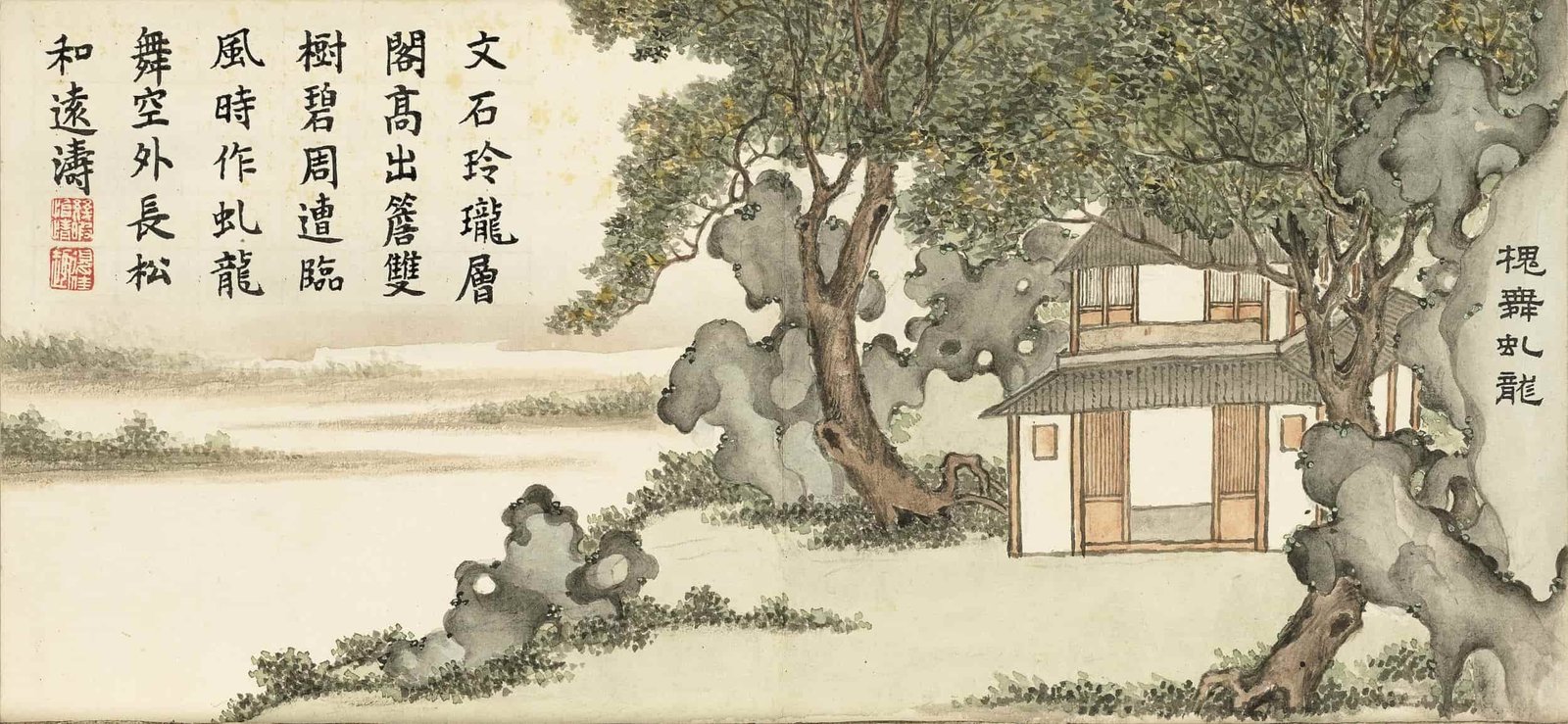
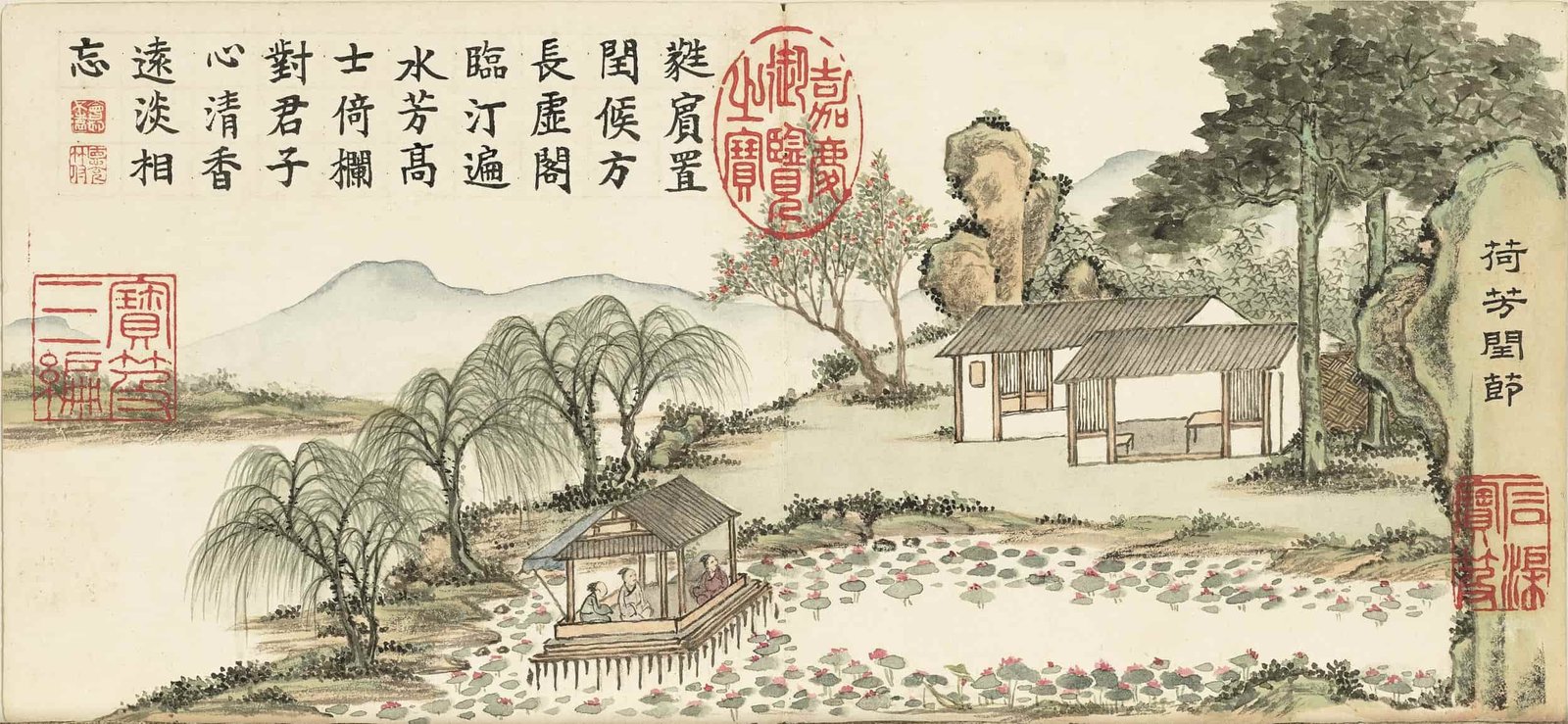
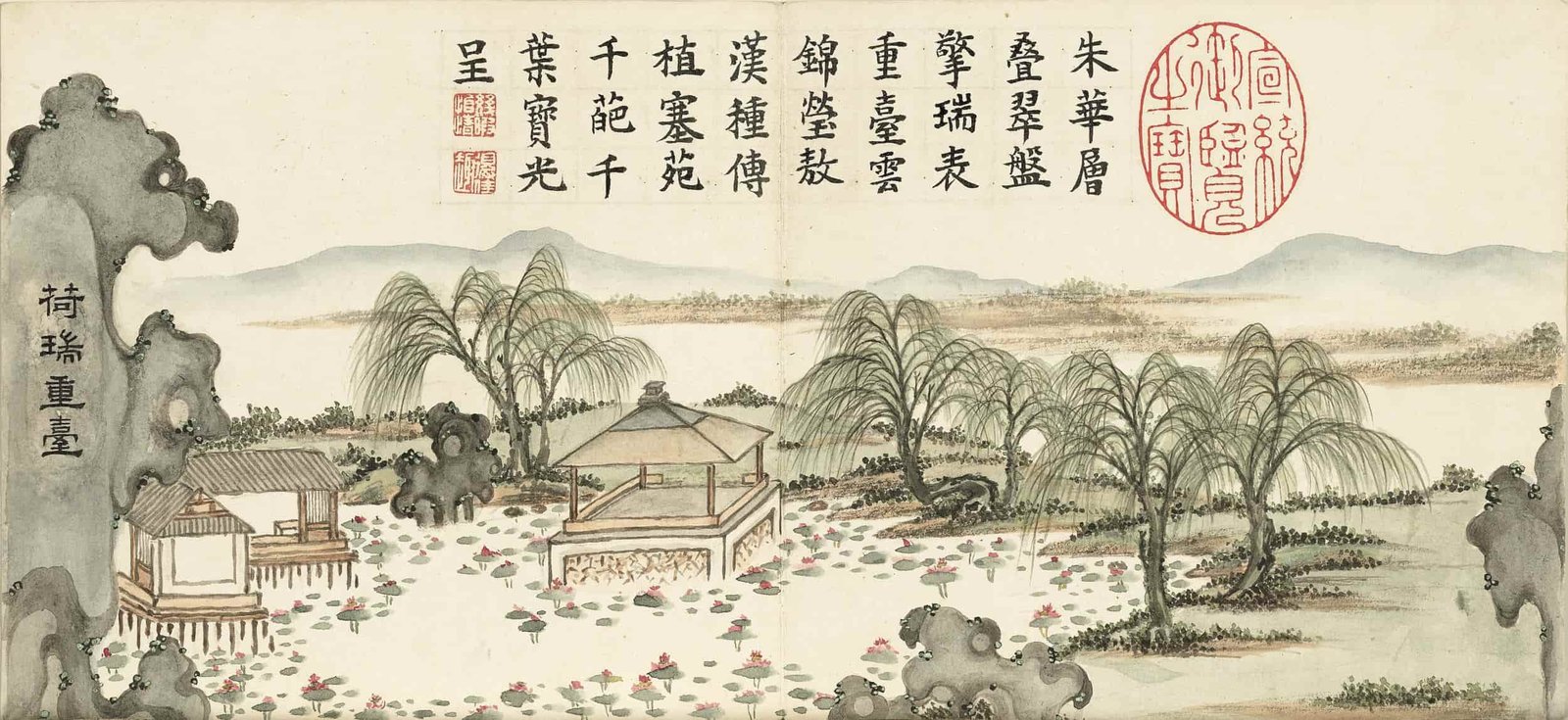
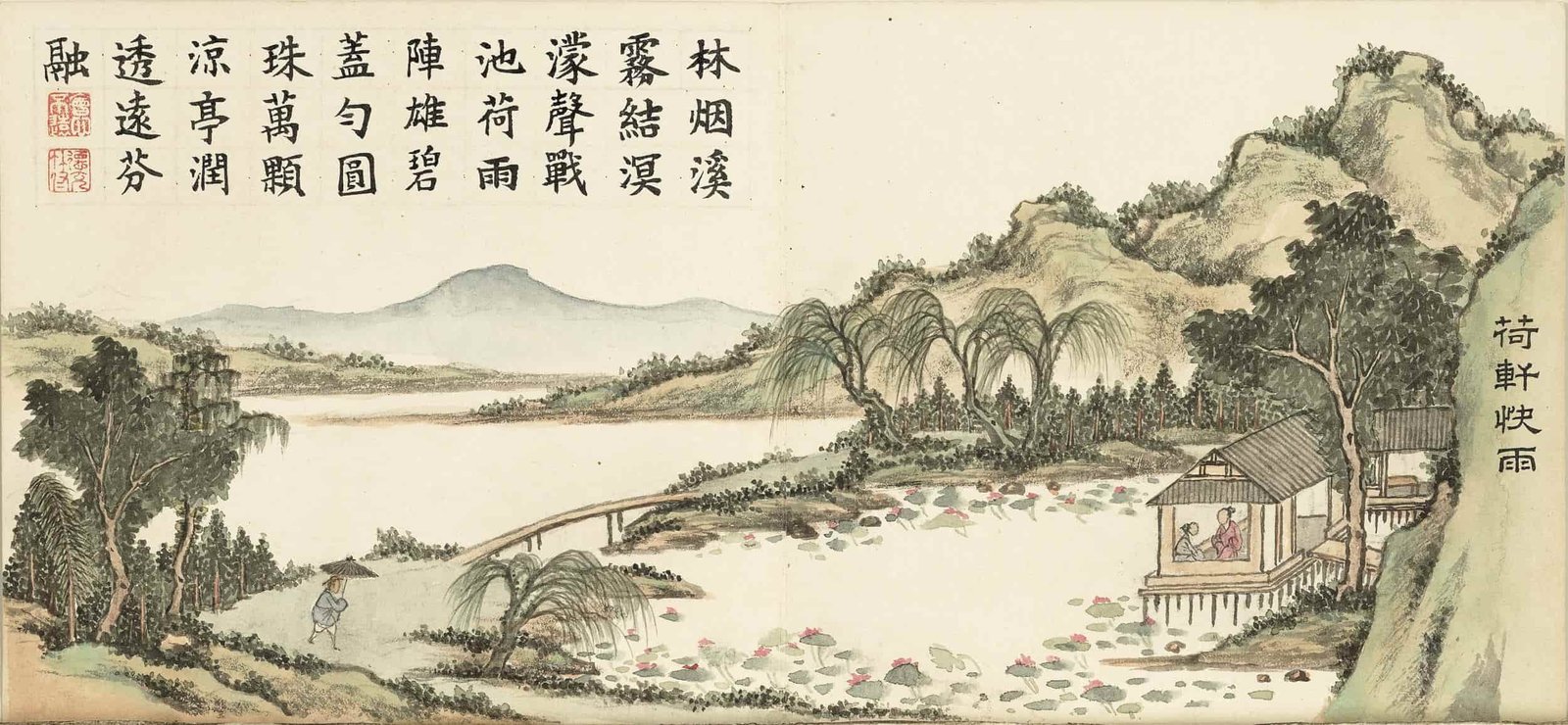
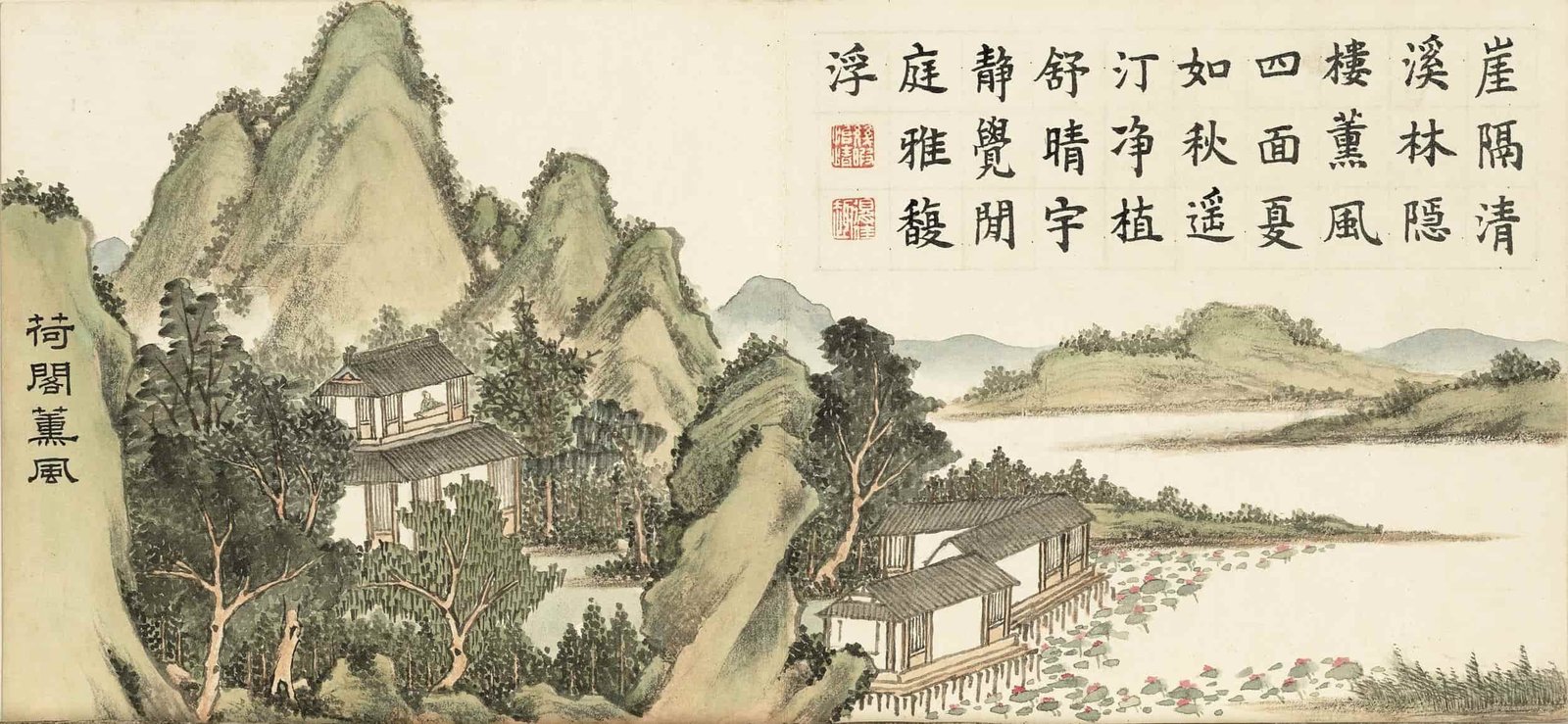
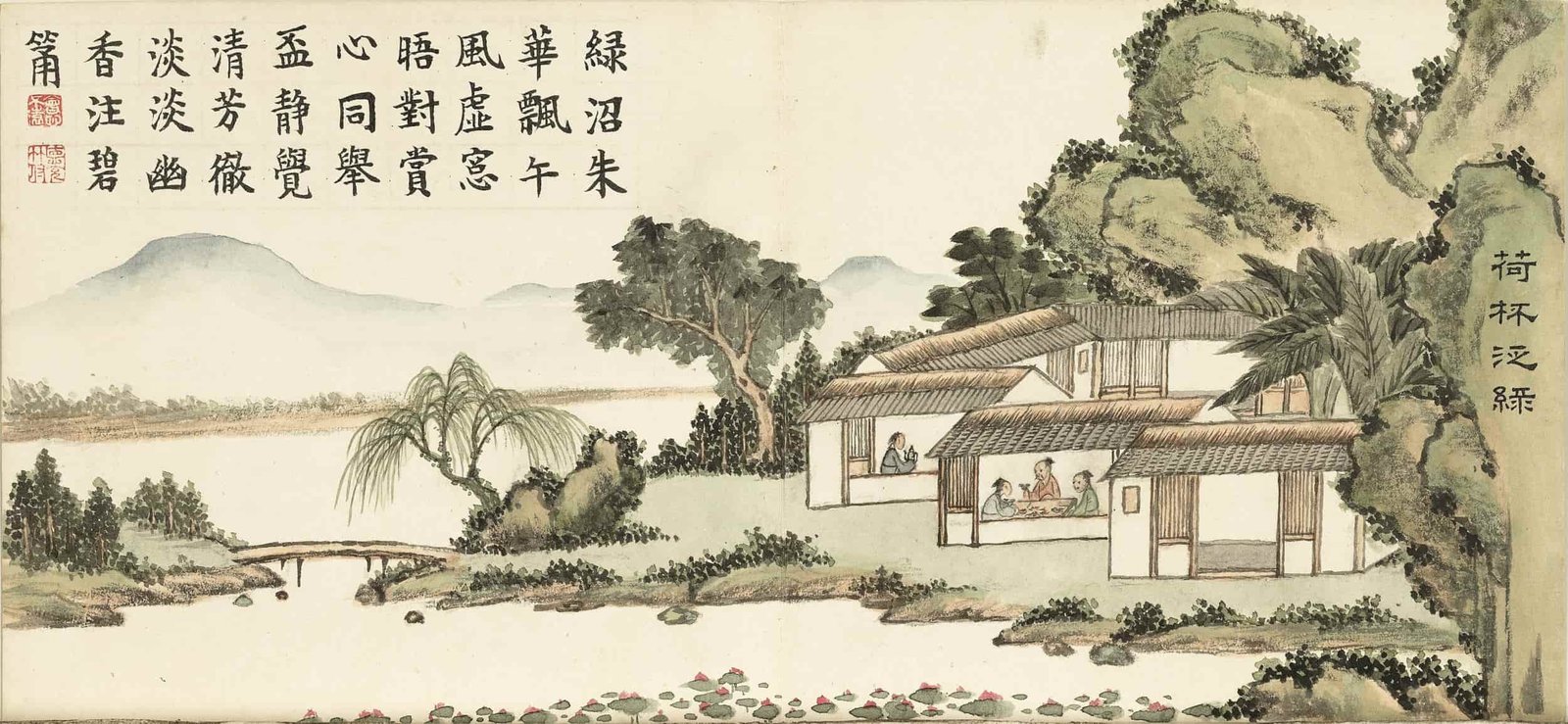
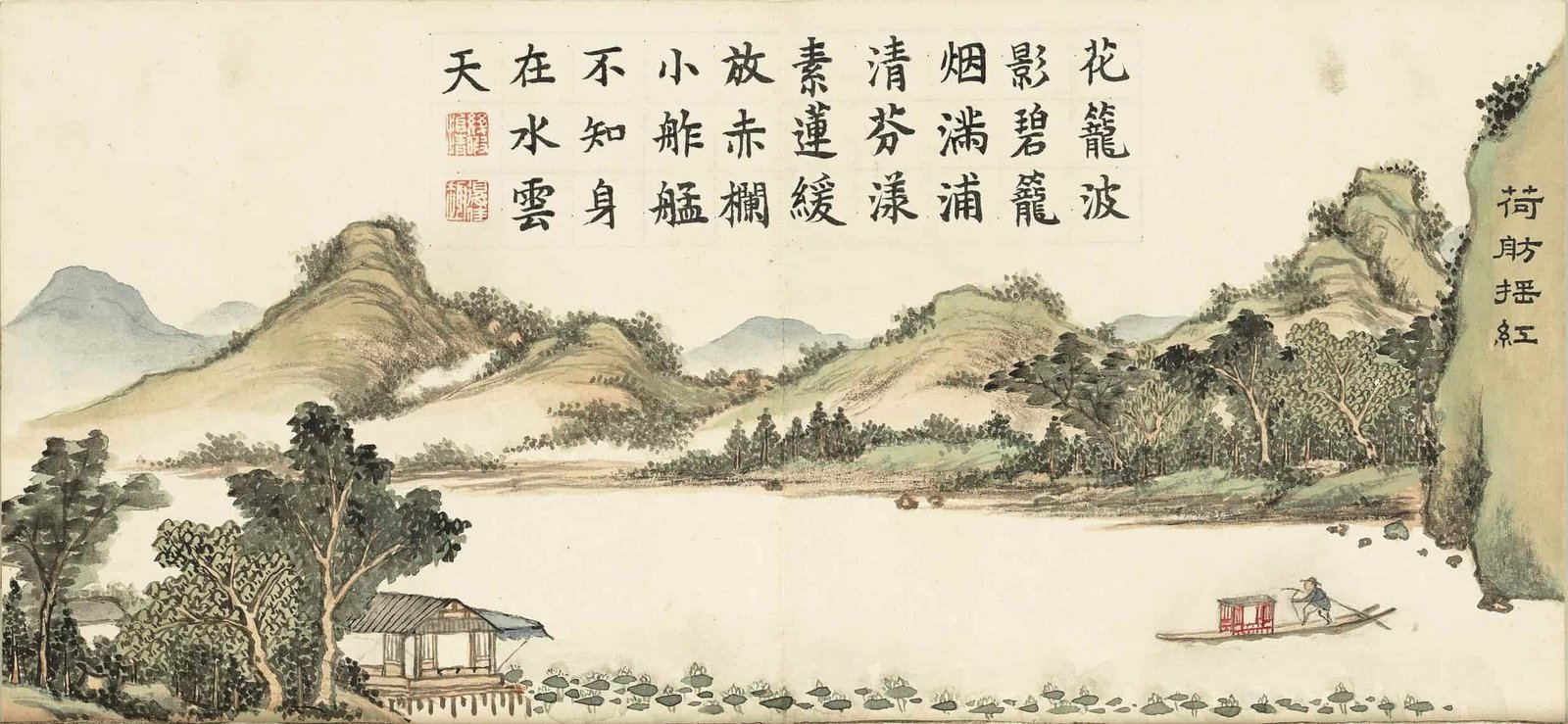
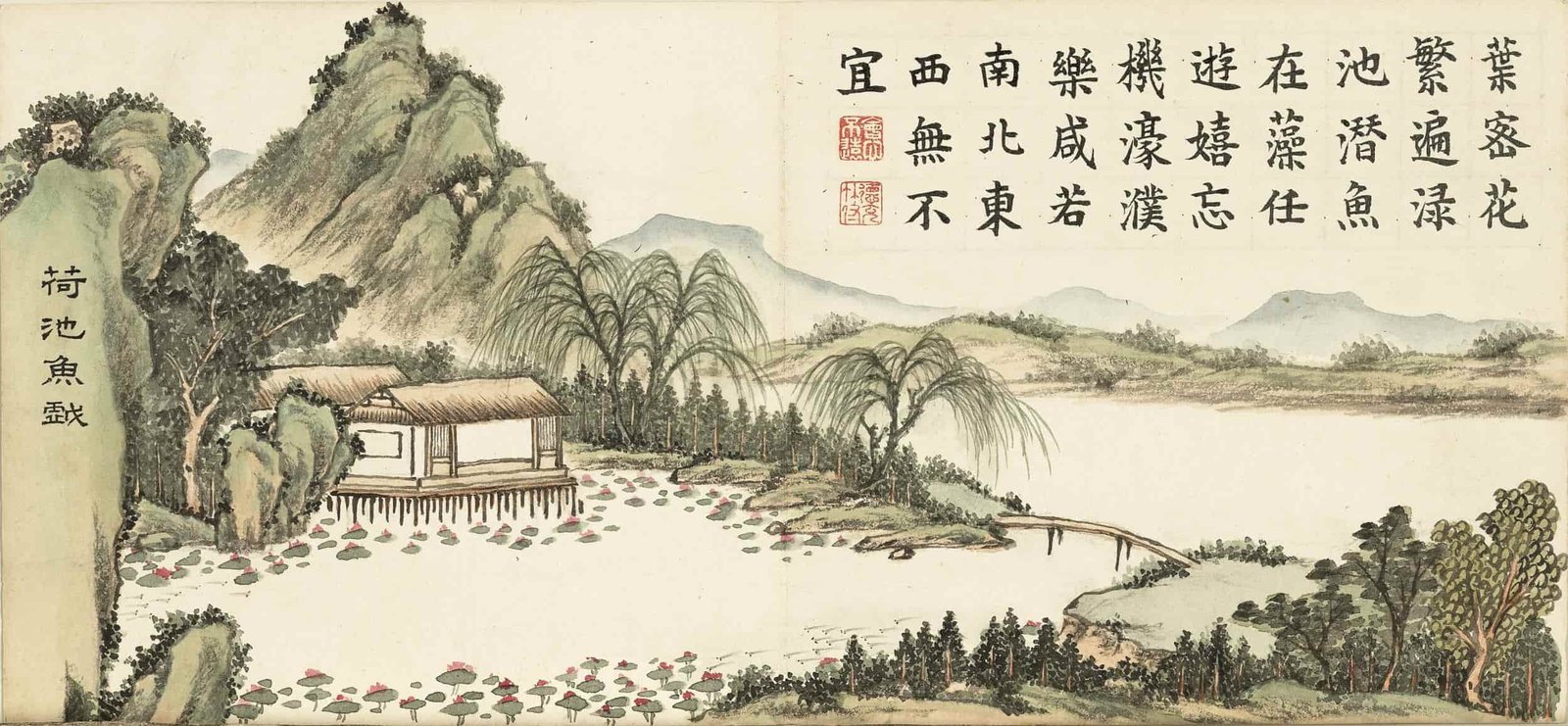
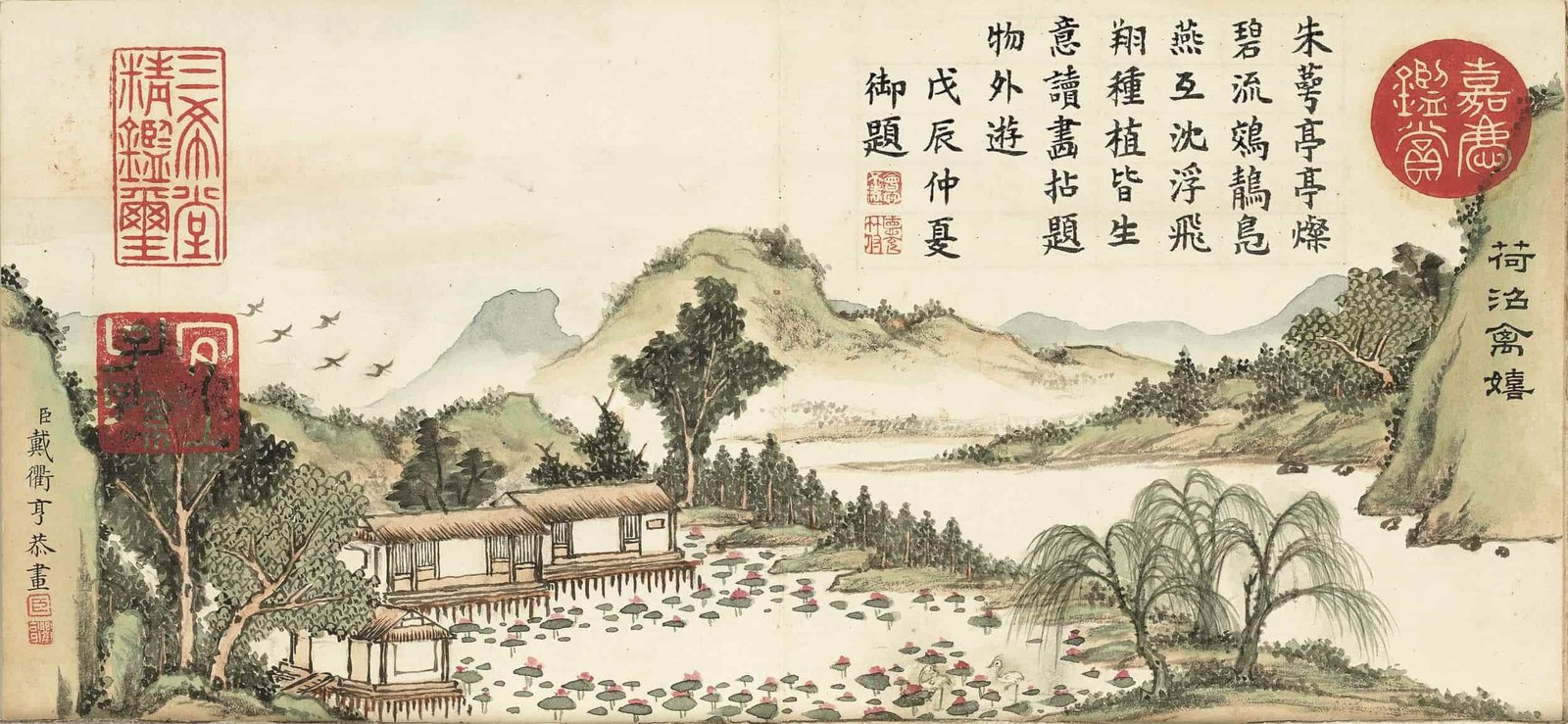
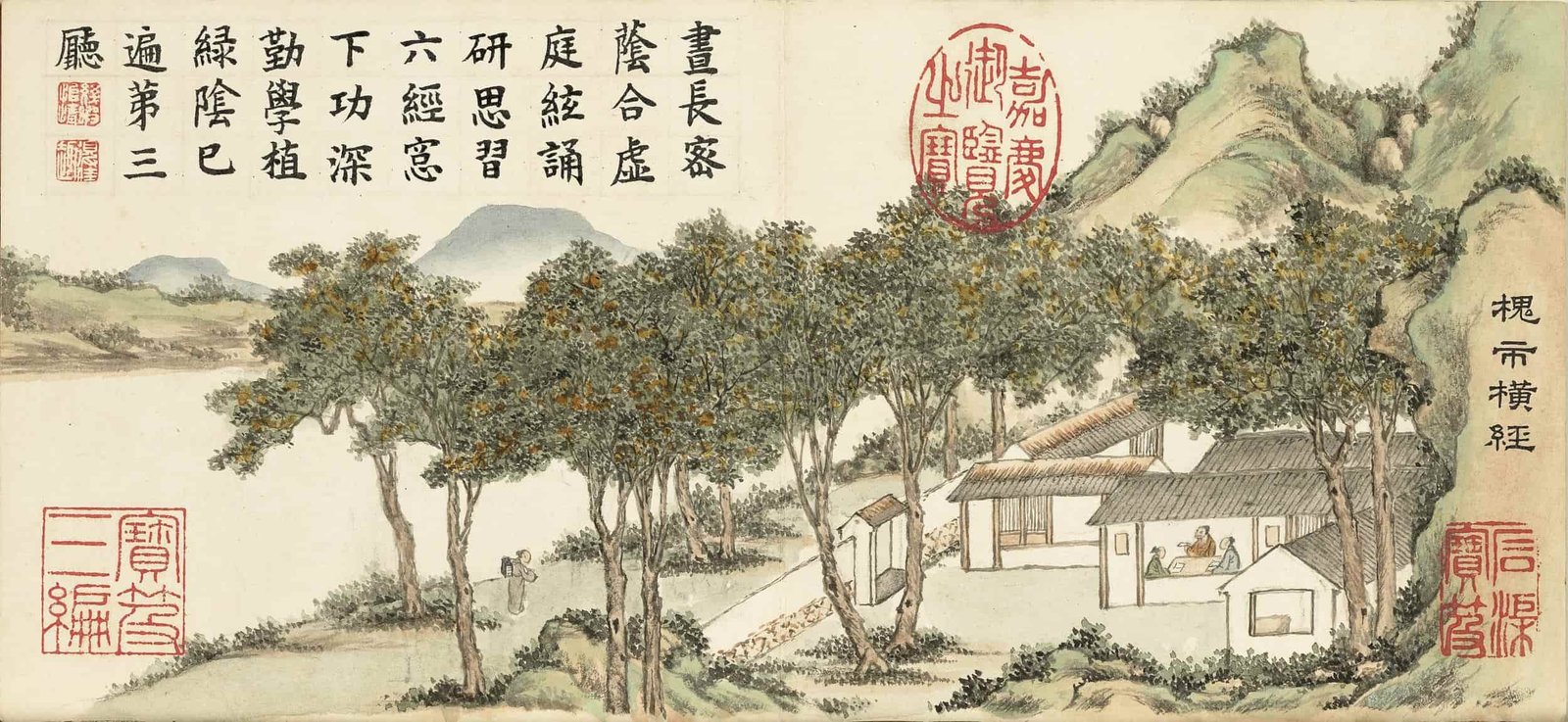
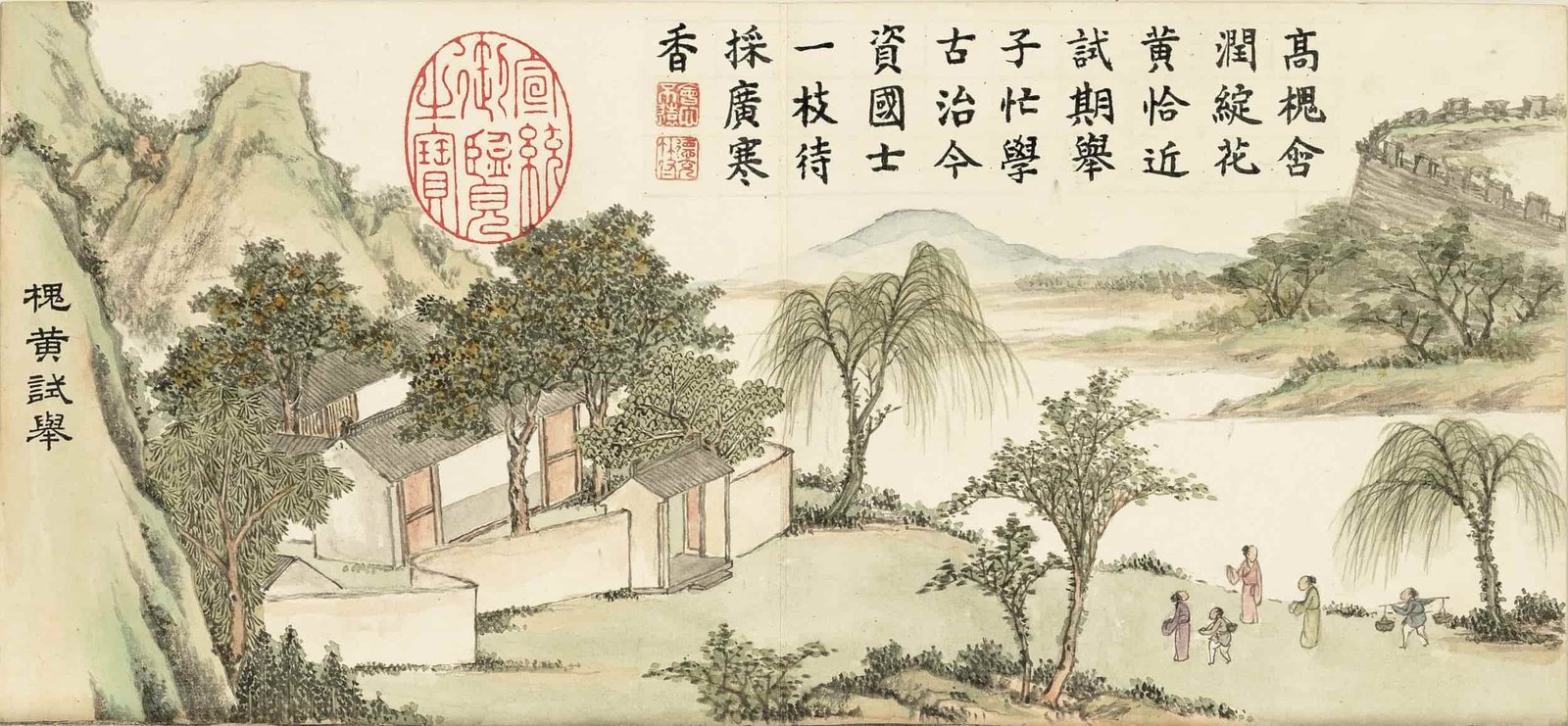
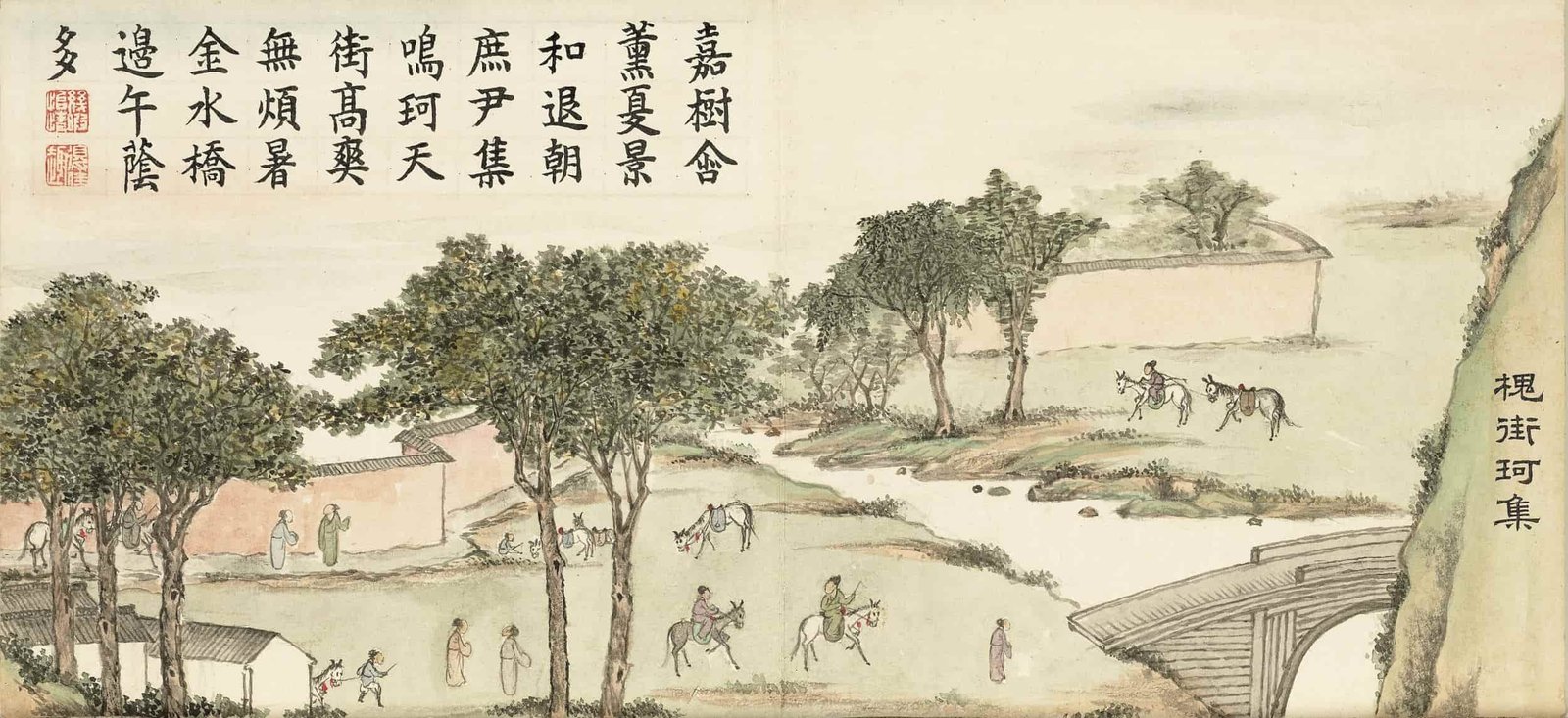
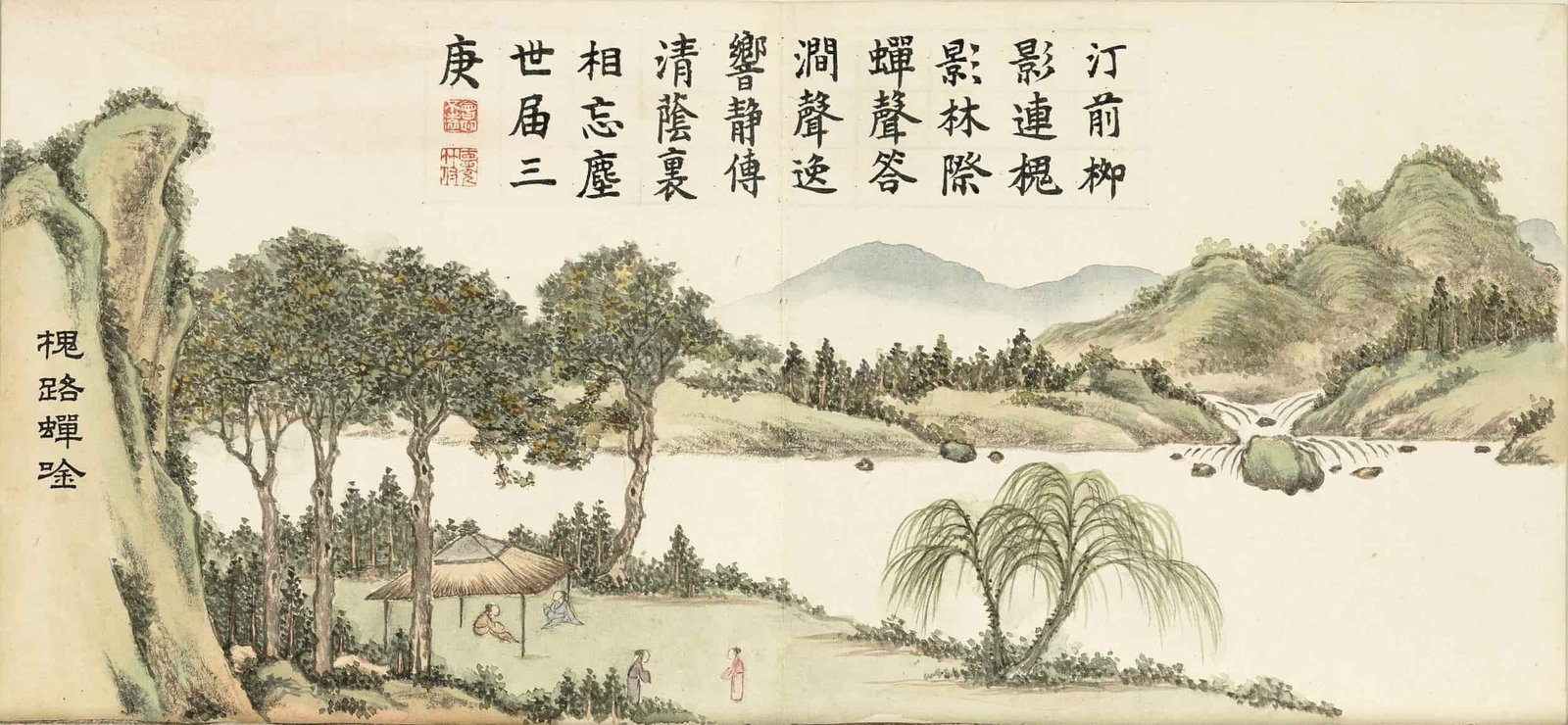
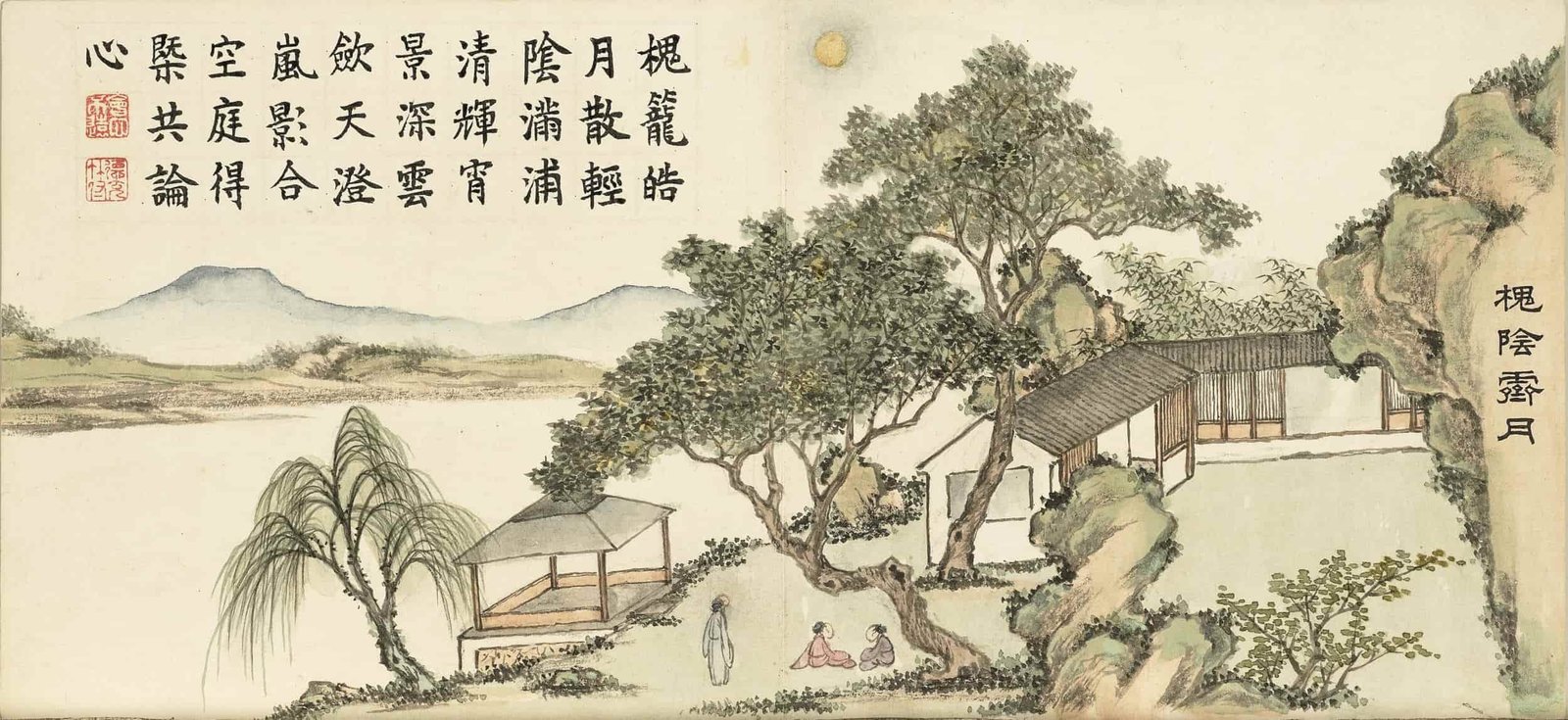
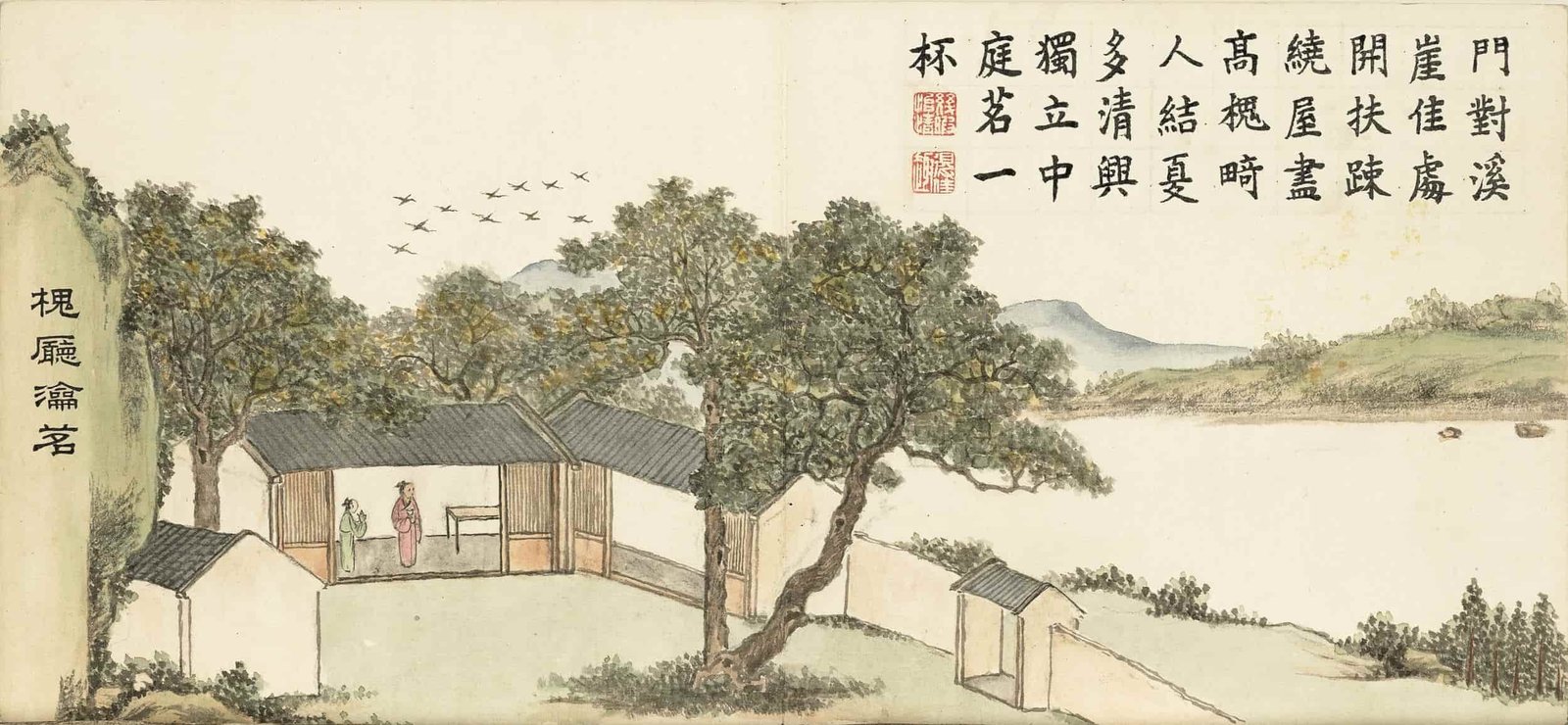
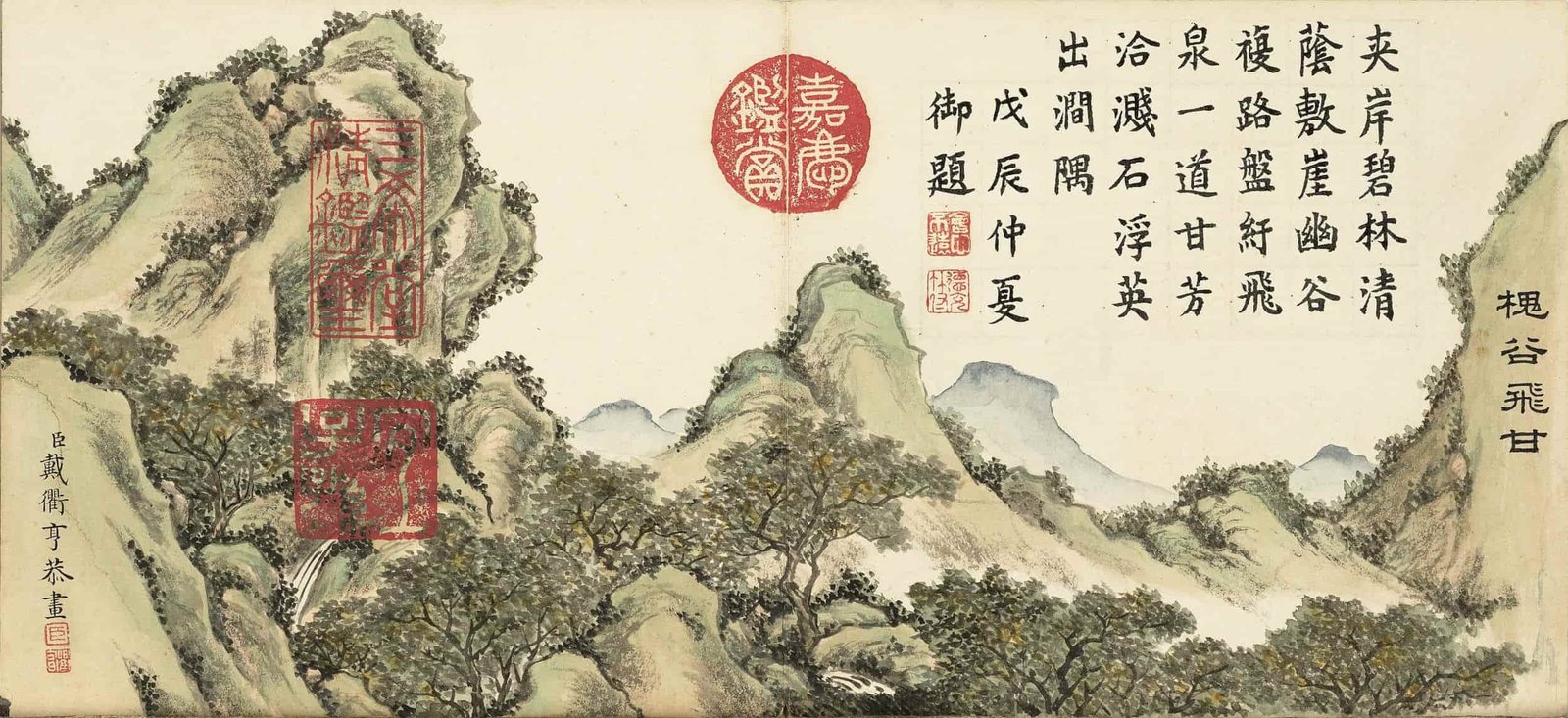
评价
目前还没有评价